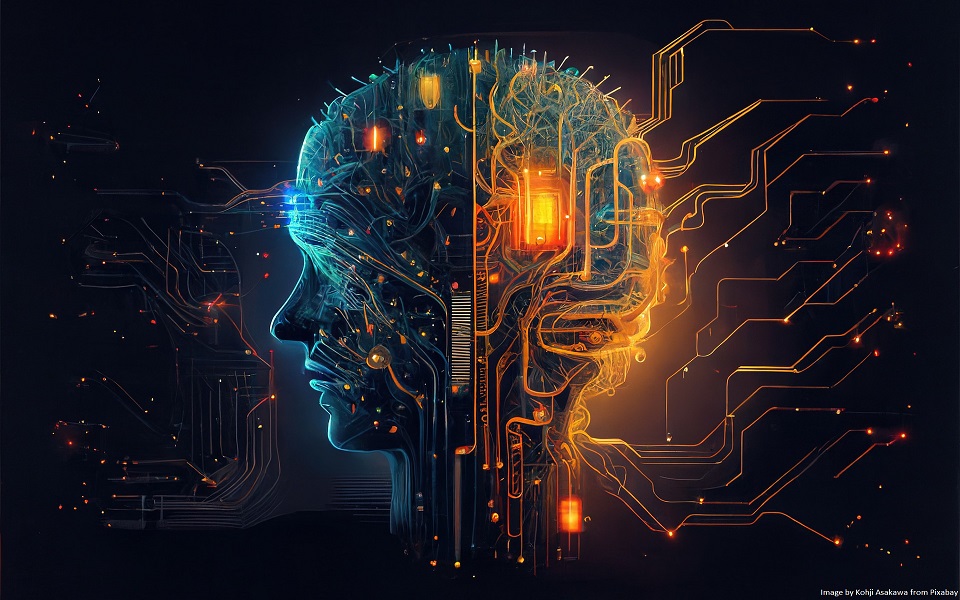With time and technology, machine learning (ML) and artificial intelligence (AI) redefine the norm of riding, regular check-ups, and performance enhancement on motorcycles. These technologies, which hitherto were the preserve of automobiles and large-scale industries, are now coming to the motorcycling arena with an overhauling influence over telemetry and maintenance. Now, let’s dive into how AI and ML disrupt motorcycles, innovating a better, safer, and tailored bike ride environment.
Telemetry – What does it mean in the world of Motorcycling?
Telemetry is one of the systems that deal with acquiring data from different types of sensors placed on motorcycles. These sensors are useful because they measure valuable data, such as speed, lean angle, brake pressure, throttle position, and pressure on the tyres, through a data collection centre. Telemetry information is helpful to riders who want to know how they or their bike works; for instance, perpetual statisticians help engineers and mechanics to solve problems when diagnosing an issue, establish settings, and achieve the best performance.
Concepts of Machine Learning for Motorcycle Telemetry
Machine learning, as a branch of AI, is focused on developing models that can in some way ‘learn’. Various types of telemetry data, either historical or real-time, are preamble by ML models, which can then clarify patterns, find results, and even prescribe actions. In motorcycles, this capability creates ample opportunity for enhancing cumulative performance and overhauling.
1. Personalized Performance Tuning:
Each rider has his speed and manner of body positioning, the angles he lays, and the way he brakes or accelerates. Recent advances in machine learning offer to decide improvements based on rider telemetry in just a few tantalising algorithms. For instance, in terms of speed, ML models can recommend various input parameters such as suspension setup, tyre pressure, and engine management maps due to cornering behaviour.
- Suppose there was an application that analyzes telemetry data from the recent ride, pushes out the diagnostics on stability or speed, and shows what tweaks to make. The technology of ML makes such a level of customization viable, and your bike becomes an extension of who you are.
2. Dynamic Riding Assistance:
The technology that is capable of being imbibed in motorcycles is artificial intelligence technology, which makes motorcycles more intelligent in responding to any event happening around them. For instance, by applying data from the sensors, AI is capable of foretelling a slip or instability by throttle input, lean angle, or road conditions. The system could then make fine-tune adjustments to brake force or throttle to maintain balance on the bike.
Sophisticated riding support provided by artificial intelligence may take it even a step further. Where AI may override all or parts of the suspension, traction control, or ABS to tailor them based on the input and environment detected in real-time during the ride. These changes could be based on current traffic conditions/times on the roads or even based on past routes a driver has taken and for this, it would be safer.
3. Predictive Analysis for Preemptive Maintenance:
Of all the uses of machine learning in motorcycling, Predictive maintenance is arguably the most promising. Traditional approaches are time-based and involve performing maintenance and repair work based on the clock. In contrast, modern approaches use machine learning algorithms to identify, based on telemetry information, when a particular component could fail. Based on usage trends in the vehicle, for instance, brake pad, stress of the suspension system, and chain damage. The ML system may inform the rider about certain parts that are due for replacement before they become a problem.
This not only makes riders safer but also minimises the overall cost of ownership of the transportation system. It is not necessarily required to perform the maintenance activities of these riders at fixed intervals as can be done in the traditional system, but a condition-based maintenance. In due course, ML can learn the individuality of wear and tear of various bikes and possibly turn more predictive with how a certain rider uses their motorcycle.
Artificial Intelligence and Motorcycle Safety
AI's role in enhancing motorcycle safety goes beyond predictive maintenance. Here’s how AI-powered systems are making motorcycles smarter and safer:
1. Collision Detection and Avoidance:
Modern cars are equipped with ADAS, and similar features are in the experimental stage for motorcycles; they are expected to be developed using AI. These systems employ cameras, radar, and other sensors to identify the presence of other vehicles, pedestrians, or objects that may be on the path of the motorcycle. When this data is fed into the AI system, they are capable of notifying the rider or the system even taking actions such as the emergency brake or controlling the throttle to avert an accident.
– AI-based collision avoidance systems can also help consider a rider’s blind spots and give caution if a vehicle is approaching the rider or travelling beside them at high speed. With AI an element of situational awareness is brought to the riding experience thus enhancing protection at this level.
2. Adaptive Cruise Control and Traffic Monitoring:
AI has been blamed for the introduction of adaptive cruise control, which has recently begun to appear in motorcycles. The AI system can identify the speed of the other vehicles around it and the rate at which it can adjust the speed of the Motorcycle to match the speed of the surrounding traffic. This creates a gap between the motorcycles in case of slow-moving traffic. This feature is especially helpful for long-distance riders who spend several hours on the freeway overcoming fatigue.
This is just a basic form of the technology, and versions of this in the near future could encompass smarter traffic surveillance through the increased use of Artificial Intelligence to monitor road systems, predict traffic flow, and even recommend possible new routes.
Future Innovations on the Horizon
The future of AI and ML in motorcycling is full of potential. Here are a few anticipated advancements:
1. AI-Powered Rider Training:
–Computer-controlled training could give signals on aspects like cornering abilities, braking as well as acceleration. Heating data and through their telemetry the system can identify where changes should be made and the kind of drills or tips that should be used to get the riders into better habits. This would prove especially beneficial for learners or those using better-performance bicycles, such as mountain bikes.
2. Smart Helmets and Wearable Tech:
Additional safety and performance improvements may originate from smart helmets which are equipped with sensors and can be connected. Through interaction with the motorcycle’s onboard artificial intelligence, smart helmets could offer augmented reality, information display & health updates for the motorcycle rider. A helmet that can sense your fatigue level depending on your head positioning on the bicycle and your heart rate.
3. Crowdsourced Road Hazard Detection:
In the future, AI and ML will again consolidate telemetry from many motorcycles to identify and plot the risks on the roads. In particular, if a number of bikes pass across a slippery part of the road, the system can also convey the signal to other bikes with recommendations to reduce the speed. It is possible that by gathering this kind of data from the community, one can increase road safety on a broad level for all the riders.
Conclusion
The integration of machine learning and AI into motorcycling is transforming both technology and the riding experience. From personalised performance settings to predictive maintenance, AI is making motorcycles smarter, safer, and more reliable. As these advancements continue, riders can look forward to bikes that are more intuitive and connected, enhancing both performance and safety. For those eager to enter this field, a data science course in Chennai offers essential skills in AI and data analysis, paving the way for innovation in motorcycling and beyond.



































